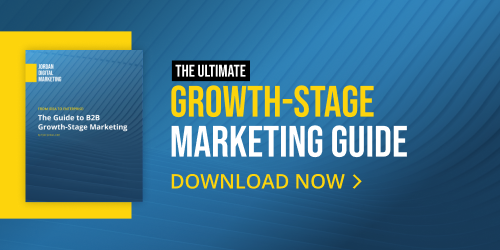Google's Original Conversion Value Metric: What to Know
Looking for a job can be rough. There’s so much advice out there on what to include or not include on your resume, cover letters, questions about why you want to work there, and don’t even get me started on those applications where you have to upload your entire resume + type in your job history in a form (I’m looking at you, Workday).
Part of the reason job-hunting is so tough right now is the sheer volume of folks looking for work. This also means that hiring for a job is no cakewalk, particularly for remote job opportunities. As more companies return to the office, the sheer volume of applications for remote job opportunities has increased astronomically (I’ve seen hundreds and thousands of applicants for a single job opening).
With that kind of volume, it’s no wonder employers have turned to automation to help them go through resumes. While automation can be helpful, recruiters and companies shouldn’t leave their vetting process entirely to machines.
Tips for Using Automation in the Hiring Process
Let’s talk about ways you should use automation:
- Candidate communications: thanking a candidate for applying, scheduling interviews, and yes, even sending rejection letters
- Reminders to the hiring team: our ATS (applicant tracking system – shoutout to Ashby!) sends reminders to our hiring team when an applicant has been sitting in one stage of the pipeline for more than a predetermined number of days
- Offer letters + HRIS integrations: we can send offer letters to candidates directly from our ATS and export them to our HRIS when the offer is accepted
- Required credentials: some roles require applicants to have a certification or license to do the job. Automation would be helpful to ensure that the applicants meet this requirement
Disadvantages of Using Automation in the Hiring Process
While automation is helpful and has undoubtedly made many recruiters' lives easier, it must be used cautiously. Here are some caveats:
- Applicants can get rejected based on their honest answers. If you have a screening question that requires 5 years of experience, but your applicant has 4, the automation would reject them. You could miss out on great candidates with great overall experience if the automation decides that a single year of experience is a deal-breaker.
- Women are 16% less likely to apply to a job after viewing its qualifications, and they apply to 20% fewer jobs than men.
- According to a study by Harvard Business School, up to 88% of qualified workers are disqualified because of automation. Furthermore, most of those workers are “hidden workers,” or workers that are disqualified because of gaps in their resumes, part-time work when they can work full time, or those not currently employed. And you guessed it: these hidden workers include “caregivers, veterans, immigrants and refugees, those with physical disabilities, and relocating partners and spouses.”
- Candidates may not meet all of the job posting qualifications, but they may have transferable skills or strengths that would make them great candidates for the role
While I can appreciate good automations, I’m not trusting our automation to find the fantastic candidates we have been lucky enough to have at JDM. And if you’re looking for a high-touch recruiting experience, feel free to check out our careers page to see if a role interests you.
Tags:

Jul 28, 2023 9:56:38 AM


-Dec-17-2025-09-01-13-5742-PM.png?width=500&height=500&name=Regular%20Blog%20Hero%20(2)-Dec-17-2025-09-01-13-5742-PM.png)


-Dec-04-2025-09-58-32-5416-PM.png?width=500&height=500&name=Regular%20Blog%20Hero%20(1)-Dec-04-2025-09-58-32-5416-PM.png)